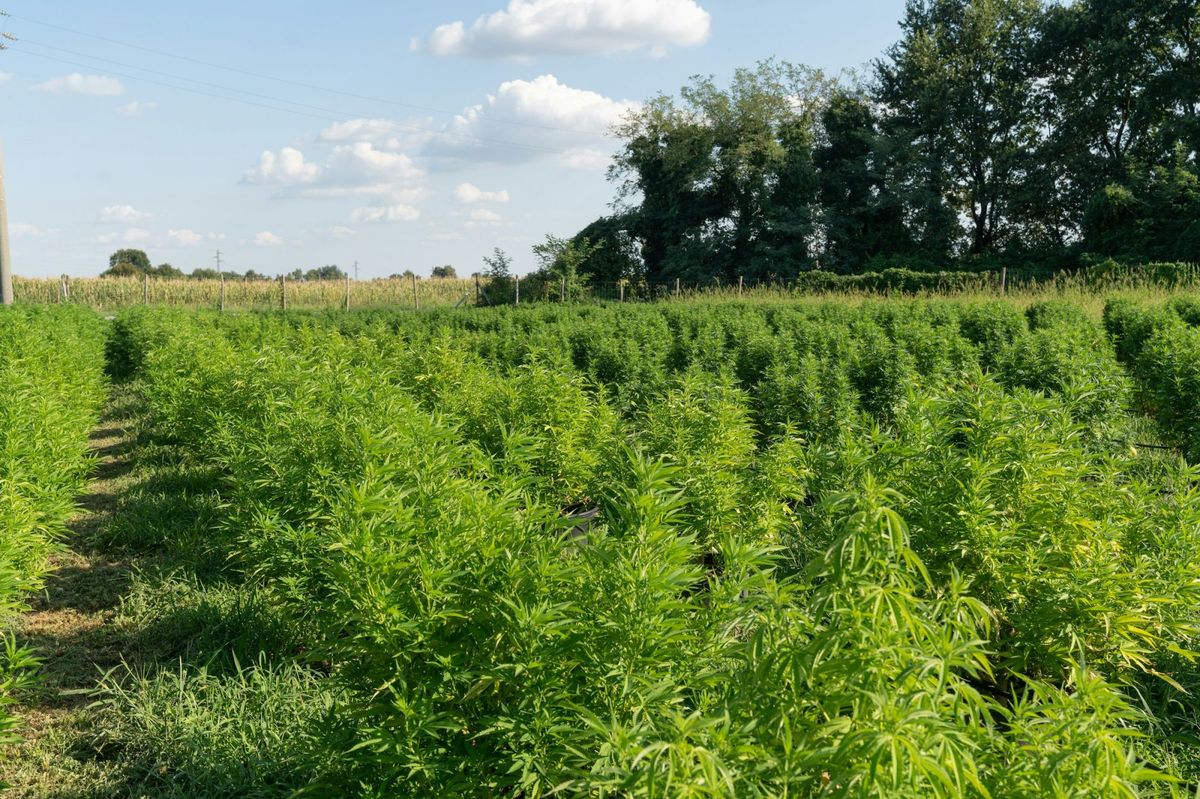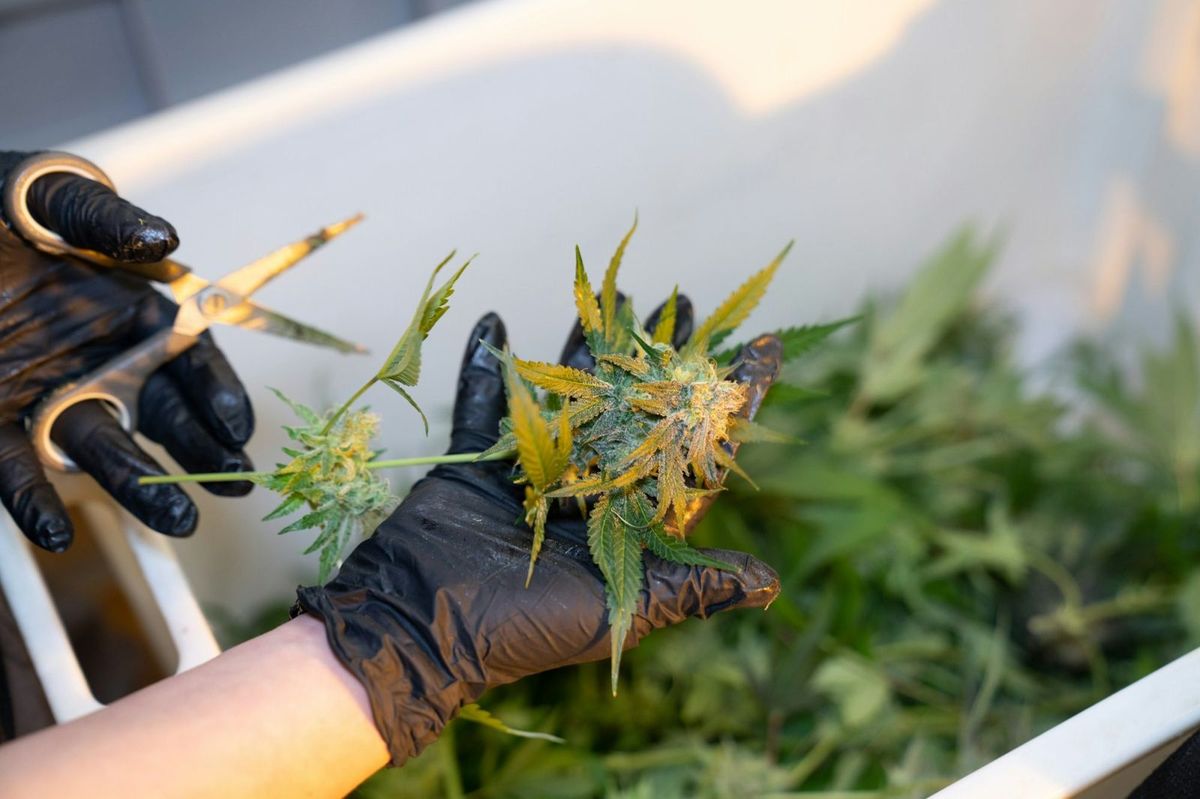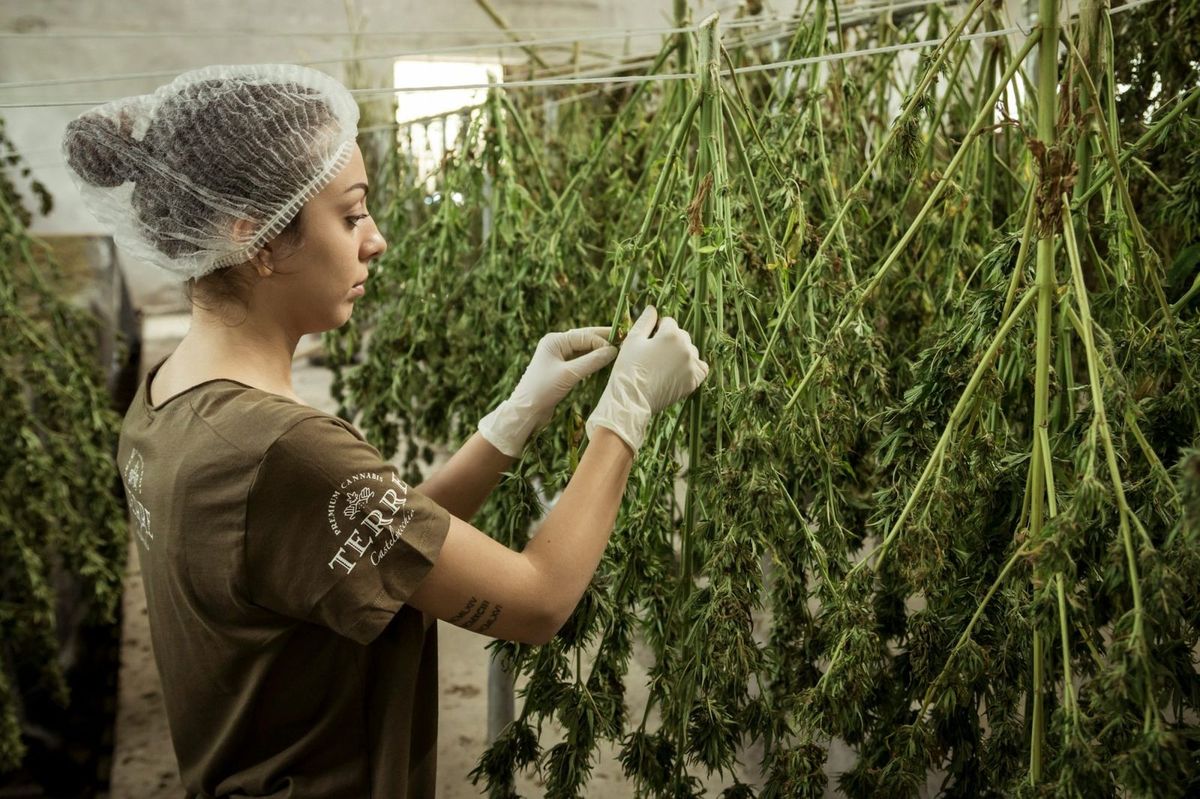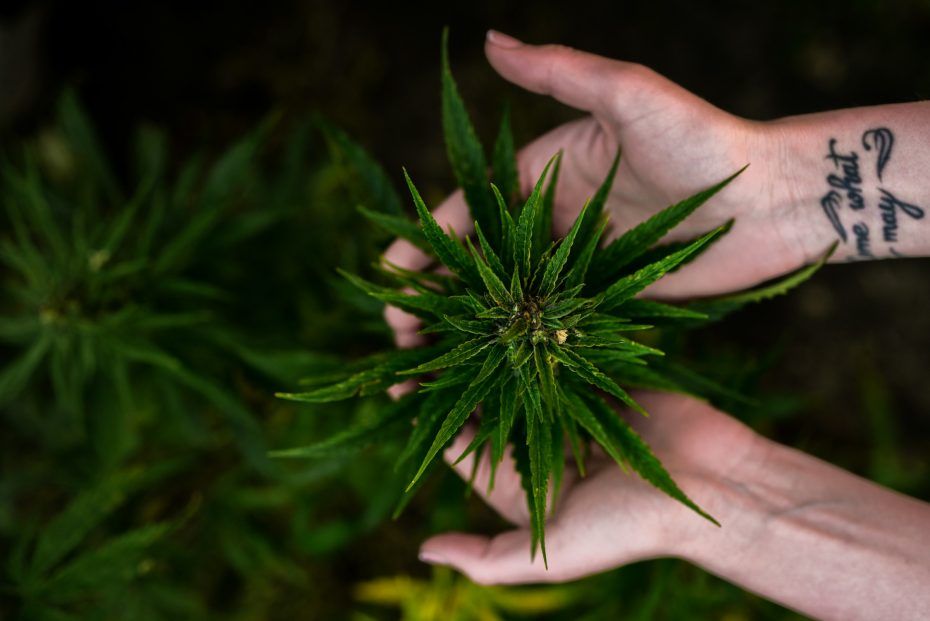Get a concise guide that provides essential insights to help you cultivate cannabis legally and effectively
Growing cannabis legally in Thailand starts with mastering GACP Cannabis Standards For Growing In Thailand; skip them and you invite fines or closure. In a scene where regulations are complex, knowing how to legally grow marijuana is crucial. This blog will guide you through the essentials of GACP regulations for medical cannabis in Thailand, so you can grow with confidence and compliance.
To streamline your compliance efforts, GrowerIQ offers cannabis production software that can simplify the process of meeting GACP standards, making it easier for you to achieve your goals.
Background Of Marijuana In Thailand

Cannabis has been part of Thai culture for centuries. The plant likely came to the country from India, as the Thai word for cannabis, “ganja,” suggests. The plant was integral to daily life throughout Southeast Asia, including in the kitchen. Thais used cannabis as a flavor enhancer in traditional dishes and as a remedy for common ailments.
Cannabis was so prevalent in Thailand’s culinary and medical traditions that it became known as the “kitchen herb.”By the 1800s, it was a staple in rural diets and household remedies. It was used to:
- Flavor curries, soups, and stews
- Treat everything from pain and nausea to digestive issues
Laborers reportedly used cannabis to relax their muscles after a long day’s work, while women used it during childbirth to ease labor pains.
An Industrial Crop
Beyond its culinary and medicinal uses, cannabis was also an important industrial crop in Thailand. The plant’s strong fibers were used to make ropes and textiles. Farmers grew cannabis alongside their rice crops, and the plant was so common that it was considered a weed.
A Criminalized Plant
In the 20th century, cannabis faced increasing restrictions in Thailand due to international pressures. The plant was eventually criminalized in the 1930s, despite its deep cultural roots. For decades, cannabis remained illegal in Thailand, and people caught with the drug faced harsh penalties.
A Legalized Plant
In 2018, Thailand became the first Southeast Asian country to legalize cannabis for medical use. Full decriminalisation followed on 9 June 2022, though adult-use rules remain in flux pending a new Cannabis Act. This marked a return to the plant’s traditional role in Thai society. The move also highlighted the country’s growing recognition of cannabis’s therapeutic and economic potential.
A Leader in Cannabis Reform
Thailand’s evolving relationship with cannabis reflects its rich history and emerging role as a leader in cannabis reform in the region. The country is embracing cannabis as a key component of its medical and economic future.
Related Reading
- Marijuana Cultivation License
- Requesting Permission to Grow Marijuana in Thailand
- Marijuana Greenhouse
- Marijuana Project
- Cannabis products
- Commercial hemp cultivation license
- Requesting permission to grow marijuana
What Is Thai GACP?

GACP (Good Agricultural and Collection Practice) sets farm-level rules for soil, seed, pest control and harvest to guarantee batch-to-batch consistency. It prioritizes safety and consistency, much like GMP (Good Manufacturing Practice) does for processed products.
Patients rely on cannabis for its therapeutic effects, and any compromise in quality can affect their health. GACP covers everything from soil quality and seed selection to pest control and harvest techniques. This comprehensive approach protects patients and ensures that the cannabis they receive is safe and effective.
How Does GACP Thailand Align with EU-GACP Standards?
GACP Thailand aligns closely with EU-GACP standards, which means that adhering to Thailand’s GACP can also help growers access the European market. Meeting EU specs also unlocks GMP certification pathways demanded by most importers. The European Union has strict compliance requirements for agricultural products, and meeting these standards is essential for competing in the global market. To better understand how Thailand’s approach compares globally, this concise guide to EU-GMP, GACP, and GPP breaks down the standards and what they mean for cannabis cultivators.
By aligning with EU-GACP, Thailand is positioning its cannabis producers for success on the international stage. This is especially important in the rapidly growing medicinal cannabis market, where quality and compliance are paramount. It’s a smart move that will benefit both Thai growers and patients around the world.
Streamline Cannabis CultivationHow Does GACP Thailand Support the Medicinal Cannabis Market?
GACP Thailand is a comprehensive framework that supports the cultivation of high-quality cannabis for medical use. It emphasizes:
- Safety
- Consistency
- Compliance with international standards
For growers, this means adhering to guidelines that cover every aspect of cultivation, from soil and seed selection to harvest techniques. For patients, it means access to safe and effective cannabis. As the medicinal cannabis market continues to grow, GACP Thailand will play a crucial role in ensuring that patients receive the quality products they need.
Uncomplicate Your Hemp Production with GrowerIQ
Cannabis growers face challenges in managing reporting, documentation, and compliance requirements due to the complexity of regulatory frameworks, evolving legal standards, and the need for accurate record-keeping in a highly regulated industry.
At GrowerIQ, our software aims to provide cannabis growers with a comprehensive solution for:
- Managing cultivation operations
- Ensuring compliance
- Optimizing quality
- Enhancing efficiency throughout the seed-to-sale process
- Overall uncomplicating the production process
We do this with our software which offers a range of functionalities to assist cannabis growers, including:
- Seed-to-Sale Tracking
- Quality Management
- Cultivation Planning
Why Use GACP Standards?

Cannabis is now a medicinal herb in Thailand, regulated under the Department of Thai Traditional and Alternative Medicine. The new Cannabis & Hemp Act ensures cannabis is cultivated to meet medicinal plant regulations, which are as strict as modern pharma standards. Following GACP keeps you compliant with both the Thai FDA and international regulations, steering clear of legal headaches.
Product Quality and Safety: Ensuring Consistency
Cannabis for medicinal purposes must meet high-quality standards to ensure its safety for patients. GACP requires documenting cultivation practices to monitor plant lineage and origin and standardizing processes to reduce contamination and variability in the final product. By following these practices, businesses ensure their cannabis products are pure and consistent.
Accessing Global Markets: The Ticket to Expansion
Thailand’s GACP standards align with EU-GACP guidelines, making it easier for businesses to enter international markets like the EU, US, and Canada, where quality assurance is crucial. Meeting GACP standards enhances your credibility and opens doors to certifications that facilitate exports to regions with strict medicinal cannabis standards.
Credibility and Trust: Building Consumer Confidence
Implementing GACP shows your dedication to best practices in cannabis cultivation, fostering trust among consumers, especially patients relying on cannabis as medicine. Certification acts as a quality seal, reassuring buyers, distributors, and medical pros that your product is:
- Safe
- Effective
- Up to rigorous standards
Operational Efficiency: Streamlining Your Business
GACP standards mandate comprehensive record-keeping and traceability systems, boosting operational efficiency. Every batch of cannabis is documented from:
- Seed to sale
- Improving inventory management
- Quality control
If issues arise, you can quickly trace the source, minimizing risks and ensuring swift corrective actions.
GACP Cannabis Standards For Growing In Thailand

Criteria for Certifying Standards for Good Planting and Harvesting of Medical Cannabis Plants in Thailand
Scope
These guidelines outline the principles and requirements for auditing and certifying the planting and cultivation standards necessary for the successful cultivation and harvesting of medical cannabis plants in Thailand.
Requirements
These standards specify major requirements for the proper planting and harvesting of medical cannabis plants in Thailand. Adherence to these requirements is mandatory. Any deviation or defect in compliance with these standards could have a direct and severe impact on the quality and safety of cannabis raw materials intended for medical use.
Judgment Criteria
Certifiers must conduct their practices in a manner consistent with the established requirements for good planting and harvesting standards of medical cannabis plants in Thailand. This adherence ensures the integrity of the certification process and the upholding of the highest standards.
1. Quality Assurance
Adequate measures must be in place to control the production process at every step, ensuring the consistent production of high-quality and safe products in alignment with the requirements of our trading partners.
2. Personal Hygiene
- Operators are required to possess a comprehensive understanding of the botanical characteristics of cannabis plants and the various factors related to production, including planting, harvesting, processing, and storage of cannabis herbal raw materials.
- Post-harvest and processing workers should possess the necessary knowledge to prevent the deterioration of cannabis herbal ingredients during their work.
- Workers must adhere to appropriate dress codes for their work location, refrain from wearing jewelry, necklaces, or any other items that may pose a risk while working, and they must maintain a high level of personal hygiene.
- Operators must wash their hands thoroughly each time they commence work, use the restroom, or come into contact with any potentially hazardous materials.
- Smoking and eating are strictly prohibited in the work area to prevent contamination and the subsequent loss of quality in cannabis herbal raw materials.
- Workers should receive adequate welfare support and the facilities and conveniences necessary for their work. They should also undergo an annual health examination.
- All workers must comply with labor laws.
- Operators are required to provide workers with appropriate protective equipment to mitigate potential dangers arising from contact with substances that may cause irritation or allergic reactions during the production of cannabis herbal raw materials.
- Workers who use organic substances, biological products, and fertilizers must undergo proper training and wear suitable protective clothing.
- Workers who are ill or exhibit symptoms of illness while working are not allowed to work.
- Workers with wounds or any type of skin lesions must either suspend work or wear complete protective equipment to prevent contamination of the produce or raw materials of herbs and marijuana.
- Individuals entering the cannabis plant production area from outside must adhere to the manufacturer’s hygiene regulations and comply with all rules and regulations in place.
3. Document & Recording
- To ensure the consistent quality of cannabis herbal raw materials, an operating manual (Standard Operating Procedure: SOP) must be developed for each step of production, harvest, and preliminary processing.
- A record of past land use and pest outbreaks for a minimum of two years must be maintained.
- Records of activities in every production step, detailing the activities performed, the date, and the operator’s name, must be documented in accordance with the operations manual.
- A record of production factors, including their sources and specific details, must be maintained.
- Environmental conditions impacting the quality and safety of cannabis herbal raw materials must be documented.
- Data on the use of organic substances and biological products in the planting plot must be recorded each time they are utilized, specifying the type, purpose, date of use, rate, method, and operator’s name.
- Cannabis herbal raw materials that are in the process of storage, transportation, and packaging for sale must be labeled with the produce model and attached with a code or mark indicating the origin of production and harvest date to facilitate traceability to the source of origin.
- All documents exchanged between producers, processors, buyers, and distributors must be securely stored.
- Records of both internal and external assessments, including complaints from all trading partners, must be maintained.
- The operations, recorded data, and complaints must be reviewed at least once a year to maintain confidence in the production process and improve work procedures in accordance with objectives. Records of these reviews and corrections must be retained as evidence.
- Records of complaints and corrections must be maintained for at least two years.
4. Equipment
- Equipment, containers, and materials that come into direct contact with cannabis plants must be kept clean and must not introduce contamination.
- All tools and equipment used in the production process of cannabis herbal raw materials must be resistant to corrosion, easy to clean, and not made from toxic materials that alter the smell, taste, or other important properties of the cannabis herbal raw materials.
- All tools and equipment should be designed and constructed to prevent harm to workers, minimize the risk of contamination of cannabis plants, and be easily cleaned and inspected.
- Agricultural tools and equipment requiring precision in operation must be inspected, and corrective action must be taken if discrepancies are found. Repairs or replacements must be carried out at least once a year to ensure that the equipment functions effectively according to standards.
- Waste containers must be designed to prevent leaks, be easily cleaned, and equipped with tightly closing lids.
- Trash cans used for waste disposal must be labeled and not used in production. Waste must be promptly removed on a daily basis.
5. Planting Area (Site)
- Planting areas and materials for cultivating cannabis plants must be free from contamination by heavy metals, chemical residues, disease-causing microorganisms, and any other contaminants that may compromise the safety of cannabis herbal raw materials.
- Soil samples and cannabis plant materials must be collected for toxic residue and heavy metal analysis before planting, at least once.
6. Water Supply
- Water samples must be collected and analyzed for residual toxins and heavy metals before growing cannabis plants.
- Appropriate watering methods must be employed based on the environment and the specific needs of the cannabis plant.
- The use of treated wastewater is strictly prohibited in the cannabis plant production process.
7. Fertilizer
- Only legally registered fertilizers should be used.
- Fertilizers must be applied in a manner that aligns with the needs of cannabis plants and does not negatively impact the environment.
- Proper fertilizer management is essential to prevent contamination by non-disease-causing microorganisms and chemical and physical factors that may compromise the safety and quality of cannabis herbal ingredients.
- The use of human excreta as fertilizer is prohibited.
- Suppose farmers produce organic fertilizer for their own use on the farm. In that case, the fertilizer must undergo complete fermentation or decomposition, and the source of raw materials and production methods must be documented.
- Storage, mixing, and transport areas for fertilizer, including separate areas for composting organic fertilizers, must be appropriately proportioned and located to prevent contamination of the cannabis planting area and water sources.
8. Seed and Propagation Material
- Cannabis seeds and propagules must be high quality, free from pests, and accurately correspond to the specified species.
- The source of cannabis seeds and propagules must be verifiable.
- Measures must be in place to prevent the adulteration of different types and strains of cannabis plants during the production process.
9. Cultivation
- Production control measures must be implemented at each step without compromising the safety, product quality, environment, and the health and safety of producers, consumers, and local communities.
- Cannabis plant production must adhere to environmentally friendly conservation agriculture principles that benefit the surrounding communities and society.
- An appropriate, integrated pest management system (IPM) must be employed which does not rely on chemicals to prevent and eliminate pests.
- Organic substances or plant growth-promoting substances should be used at appropriate levels with minimal impact on the cannabis plants.
- Only permitted organic or biological substances, per the law, should be used to prevent and eliminate pests.
- Agricultural hazardous substances prohibited for production, import, export, or possession in accordance with the Hazardous Substances Act B.E. 2535 and its amendments must not be used or possessed, with the exception of organic substances or biological substances.
- Chemical sprayers and equipment, as well as the correct method for applying chemicals, must be carefully selected. The chemical sprayer must also be inspected to ensure it is in proper working condition for efficient use.
- The sprayer and equipment must be cleaned after each use, and rinse water must be disposed of in a manner that does not lead to environmental contamination.
- Various types of organic substances or biological products must be stored in specific locations to prevent contamination of each substance. Control measures must ensure the safe picking and use of these substances without causing harm to individuals or contamination of the produce.
10. Harvesting
- All components of the cannabis plant must undergo harvesting within their respective appropriate timeframes. This ensures the provision of raw materials of the highest quality for cannabis herb production.
- Harvesting operations must be conducted under favorable weather conditions. Avoid harvesting during periods of dew, rain, or high humidity.
- During harvesting, diligent attention must be given to identifying and removing any substandard parts of cannabis herbal raw materials to prevent mold formation and the degradation of cannabis raw material quality after harvest.
- Stringent measures must be implemented to prevent contamination from impurities, weeds, and toxic plants during the harvesting process and when handling cannabis herbal raw materials.
- Vigilant efforts should be made to avert contamination from hazardous objects or substances coming into contact with the harvested produce, ensuring that harvested items are not placed directly on the ground.
- Overlapping of cannabis raw materials must be avoided, and steps should be taken to prevent confusion or damage to cannabis herbal raw materials following harvest.
- The cleanliness of equipment and tools utilized during harvesting must be rigorously maintained to minimize damage and contamination and ensure the preservation of the quality of cannabis herbal raw material.
- Harvesting personnel are required to uphold high standards of cleanliness and readiness in their operations to reduce damage and contamination while maintaining the quality of cannabis herbal raw materials.
- Containers for cannabis raw materials must be maintained in a clean state, free from residual impurities and remnants of cannabis herbal raw materials from prior storage.
- Comprehensive measures must be established to prevent contamination by animals and animal carriers from affecting harvested cannabis products.
- Extreme care should be exercised during the transportation of harvested produce, ensuring prompt delivery to the product collection point. Transport protocols should incorporate measures to prevent an increase in humidity within the cannabis herbal raw materials during transit.
- Transport procedures must be implemented to prevent damage, increased adulteration, and contamination from heavy metals, chemical residue, pathogenic microorganisms, or other contaminants that may compromise the safety of cannabis raw materials during transportation.
11. Primary Processing Process
- Upon the arrival of freshly harvested cannabis herbal raw materials at the processing location, it is imperative to promptly transfer them to appropriate containers to shield them from light and moisture. Furthermore, they should be stored in conditions that prevent deterioration due to high temperatures and inhibit the growth of microorganisms.
- In instances where fresh cannabis herbal raw materials are processed into dried cannabis, expedient drying measures must be implemented following harvest and transportation to the processing site. This ensures that the quality of dried cannabis raw materials remains uncompromised by elevated temperatures and microorganisms.
- Storage conditions for processed cannabis herbal raw materials should include precise control of temperature and humidity levels to minimize damage.
- Measures should be instituted to effectively reduce the humidity levels of herbal cannabis raw materials, thereby preventing quality degradation and contamination.
- Cannabis herbal raw materials obtained from fields must undergo a sorting and inspection process during processing.
- During the preliminary herbal processing stage, cannabis herbal raw materials should be inspected to eliminate any that fail to meet established standards. Additionally, measures must be taken to eliminate contaminants and foreign substances.
- Parts of cannabis herbal raw materials derived from plots should be thoroughly cleaned, rendering various types of cannabis herbs suitable for the production process.
- Adequate measures should be taken to ensure that the processing of cannabis herbal raw materials aligns with national standard requirements, regional standards, and agreements with partners.
- Stringent precautions should be implemented throughout the preliminary processing stages to prevent contamination and spoilage. Animal carriers must not be present, and measures to deter pests must be in place.
- Specific processing methods, such as radiation that may impact safety should be communicated and specified. These actions must be undertaken by personnel with expertise in the relevant field, ensuring compliance with the requirements of the country of origin and trading partners.
12. Harvest Location (Building)
- The primary processing building’s location must be free of undesirable odors, smoke, fire hazards, dust, or contaminants and not susceptible to flooding.
- Buildings designated for primary processing should possess structural integrity, ease of cleanliness, sunlight protection, and safeguards against external contamination. Furthermore, they must be designed to prevent the intrusion of carriers and pests, while controlling temperature and humidity levels and facilitating proper ventilation.
- Construction materials used in building must not pose a risk of cross-contamination with raw materials or cannabis herbs.
- The internal structure and components within the primary herbal processing area must be constructed from durable, easily maintained, and sterilizable materials. They must be made from non-toxic substances that do not react with cannabis herb ingredients and do not introduce cross-contamination risks.
- Areas with varying levels of hygiene control should be physically separated to prevent cross-contamination.
- Adequate equipment for disinfection and various necessary cleaning and disinfection tools must be available.
- Handwashing sinks and changing areas must be designed in accordance with hygienic principles and equipped with the necessary amenities.
- The water used must adhere to cleanliness standards, and its quality should be adjusted to suit the processing requirements. Measures should be in place to prevent contamination in water storage and distribution equipment.
- The wastewater system within the primary processing process should function efficiently without negatively impacting the environment or contaminating water used in planting plots.
- Adequate lighting should be installed within the workspace, with overhead light bulbs equipped with protective features to prevent contamination in case of breakage or damage to items that may come into contact with cannabis herbal raw materials.
13. Packaging and Labeling
- Cannabis herbal raw materials that have undergone preliminary processing should be promptly and appropriately packaged to prevent degradation due to exposure to light, temperature, humidity, and contaminants.
- Continuous quality inspection measures should be in place for cannabis herbal raw materials throughout the processing stages until packaging.
- Tools, equipment, and containers used for processing cannabis herbal raw materials must be suitable, undamaged, clean, and dry. They should not cause reactions that change the quality of raw materials and must comply with specified manual operations (Standard Operating Procedures; SOP).
- Reused containers must be clean and not contribute to contamination or adulteration.
- Containers should be stored in a clean, dry environment, free from animal carriers, pests, and various sources of contamination.
- Labels affixed to containers must be clear and provide information such as the scientific name, plant part, source of origin, producer name, production batch number, harvest date, production date, quantity, and other details in accordance with the requirements of trading partners and countries.
14. Storage and Distribution
- The equipment used for transporting packaged cannabis herbal raw materials must be maintained in a clean and sanitary condition, ensuring protection from light, temperature fluctuations, humidity, and contamination.
- Packaged cannabis herbal raw materials should be stored in a dry and well-ventilated environment to safeguard their quality and integrity.
- The storage room designated for cannabis herbal raw materials must be kept impeccably clean and incorporate measures for controlling light, temperature, humidity, and preventing contamination.
Related Reading
- Requesting Permission to Grow Commercial Hemp
- Cannabis Medicine
- Growing Medical Grade Cannabis
- Marijuana Strains in Thailand
- Growing Cannabis in a Greenhouse
What’s The Difference Between EU GACP And Thailand GACP And US / Canadian GACP?

In Thailand, cannabis is more than a plant; it’s a medicinal marvel. The country’s GACP standards reflect this reverence, mandating meticulous documentation at every turn. From plant lineage to cultivation protocols, nothing slips through the cracks. This level of detail isn’t just about regulatory compliance; it’s about ensuring the highest possible quality for patients who rely on cannabis as medicine.
EU GACP: The Gold Standard for Medicinal Cannabis
The EU takes its medicinal cannabis seriously, and its GACP standards reflect that. Under the jurisdiction of the European Medicines Agency, these guidelines are standardized across member countries, ensuring that all growers adhere to the same rigorous protocols.
Like Thailand, the EU emphasizes detailed record-keeping and traceability, but with an even greater focus on patient safety. Adherence to these standards is crucial for entering the European market, which demands nothing less than the highest standards of purity and consistency.
US and Canadian GACP: A More Relaxed Approach
In the US and Canada, where cannabis is legal for both medicinal and recreational use in some areas, GACP standards tend to be more relaxed. Nonetheless, product safety remains a focal point. In the US, GACP can vary between states due to the federal system, creating some inconsistencies.
Key Priorities
- Safety
- Testing
- Traceability
GACP standards in Canada are more uniform, with a strong emphasis on laboratory testing for:
- Cannabinoid content
- Pesticides
- Contaminants
Key Differences: Documentation, GMP, and Testing Protocols
While Thai and EU GACP emphasize detailed documentation and traceability, the US and Canada focus more on product testing and safety. In Thailand, GACP and GMP are treated as separate entities, whereas in the US and Canada, they are often blended together.
Thailand’s Marijuana Market Potential & Opportunities For Businesses

Thailand’s cannabis market is gaining momentum. Statista projects revenue will hit $410.80 million by 2024, with a steady growth rate of 2.96% annually through 2029. By 2029, the market could reach roughly US$475 million, driven by over 11,000 licensed dispensaries now operating nationwide. While modest compared to giants like the U.S., Thailand is carving out a prominent role in Asia.
Changing Consumer Preferences in Thailand
People in Thailand are warming up to cannabis. They’re interested in its health benefits and recreational uses. More consumers are looking for natural wellness solutions, and CBD-infused products fit the bill. This trend aligns with the global shift toward holistic health.
Medical Cannabis Takes Center Stage
Thailand is focusing on medical cannabis. The government encourages its use for health purposes, boosting demand for pharmaceutical-grade cannabis. This creates a buzz among investors and expands the cannabis derivatives market.
Thailand has enacted legal reforms to regulate cannabis cultivation, sale, and use. This creates opportunities for local and international investors to enter a structured market. The country’s historical relationship with cannabis adds to the appeal.
The Regional and Economic Impacts of Cannabis in Thailand
Thailand’s strategic advantage is its location in Southeast Asia. The cannabis sector offers job creation, investment, and revenue opportunities. As the country diversifies its economy, cannabis could play a significant role in its growth.
Related Reading
- Cannabis Drinks
- Marijuana Cultivation License
- Requesting Permission to Grow Marijuana in Thailand
- Marijuana Greenhouse
- Marijuana Project
- Cannabis products
- Commercial hemp cultivation license
- Requesting permission to grow marijuana
Uncomplicate Your Cannabis Production Today With GrowerIQ!
Cannabis growers face a tangled web of reporting, documentation, and compliance challenges. Complex regulatory frameworks and evolving legal standards mean growers must maintain meticulous records in this tightly controlled industry. GrowerIQ steps into this chaos with a software solution designed to:
- Manage cultivation operations
- Ensure compliance
- Optimize quality
- Enhance efficiency throughout the seed-to-sale process.
Simplifying Seed-to-Sale Tracking
Seed-to-sale tracking is a critical component of cannabis cultivation. GrowerIQ offers a range of features to track plants from germination to harvest and beyond. This level of visibility helps growers stay on top of their operations and ensure compliance with regulations.
Raising Quality Standards
Quality management is another key focus for GrowerIQ. The software helps growers maintain high standards and produce top-quality cannabis by providing tools for:
- Tracking quality metrics
- Identifying quality issues
- Implementing corrective actions
Cultivation Planning Made Easy
Cultivation planning is a complex process involving managing various variables, including light, temperature, humidity, and nutrients. GrowerIQ’s software simplifies this process by providing tools for:
- Planning and managing cultivation schedules
- Optimizing resources
- Predicting yields
Enhancing Efficiency in Cannabis Operations
Efficiency is a critical factor in the success of any cannabis operation. GrowerIQ’s cannabis production software helps growers streamline their operations by providing tools for:
- Automating tasks
- Optimizing workflows
- Reducing waste
In Thailand, cannabis growers must adhere to Good Agricultural and Collection Practices (GACP) standards. These guidelines ensure that cannabis is produced safely and sustainably. GrowerIQ’s software helps growers navigate these standards by providing tools for:
- Tracking compliance
- Managing documentation
- Implementing best practices
Recommended For You
Revolutionizing Cultivation: The Unseen Power of Triploid Cannabis in Modern Agriculture
January 7, 2026Revolutionizing Efficiency How Cannabis Production Management Software Turns Grow Operations into High Performance Powerhouses
January 2, 2026Unlock the Secret to Thriving Greenery: Discover the Best Organic Fertilizer for Seedlings Today!
December 30, 2025About GrowerIQ
GrowerIQ is changing the way producers use software - transforming a regulatory requirement into a robust platform to learn, analyze, and improve performance.
To find out more about GrowerIQ and how we can help, fill out the form to the right, start a chat, or contact us.

